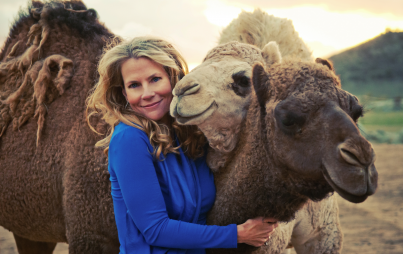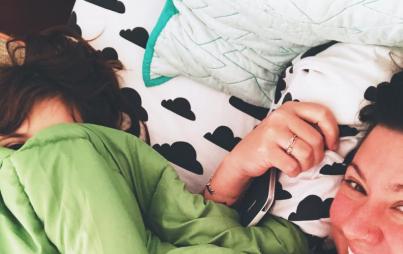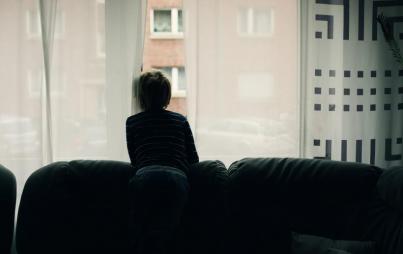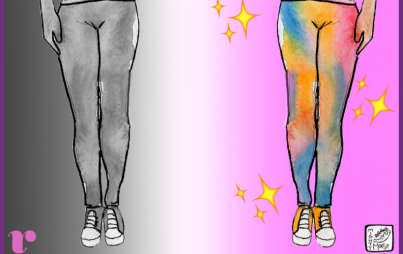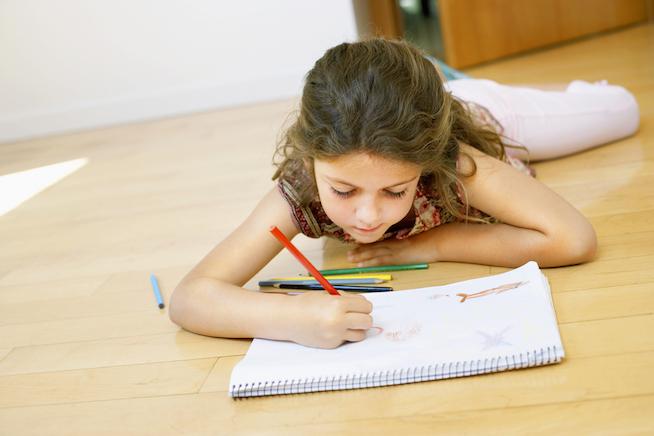
Don't be afraid.
My feelings about autism have changed because I have finally allowed myself to accept autism.
There is never a lack of autism in the news. These news stories usually focus on what causes autism, whether it be antidepressant use during pregnancy, polycystic ovarian syndrome, or another chemical, hormone, or gene. This research is supposed to give us more information that will help us make better choices. Choices that will — should? — prevent children like mine from being born.
What's often lacking from this narrative is what happens next. In a disorder where early intervention is key, diagnostic delays still push out the average age of diagnosis to between age 4 and 6, even though most parents report symptoms before age 1 and autism can be reliably diagnosed before age 2. A diagnosis brings certainty but little else for many families who are shocked by lengthy wait lists and high costs for therapies and services, along with lost wages due to time out of work. These day-to-day realities for families with loved ones on the spectrum rarely make the news, but it is this gap that Hillary Clinton’s new autism initiative seeks to close.
Funding autism services and therapies isn’t sexy, and Clinton’s initiative certainly won't capture the public’s attention in the same way that a miracle prevention or cure would do. Yet they are exactly what the children and adults on the spectrum and their families desperately need, and they shift the conversation from preventing children like mine from being born to creating a country that nurtures all children.
I am intimately acquainted with the reality of autism, and I won't sugarcoat it. I drive my autistic daughter to three hours of ABA therapy every day, take her to occupational therapy every week, and work closely with her in-class aides at school. I meet with my autistic teenage son’s IEP case manager, discuss social skills groups, and try to explain how other people think and feel to him.
I know what autism looks like, and I understand why people are afraid of it, because at its worst moments it is desperately, terribly ugly — it is children who can’t communicate, who become adults who are unable to live independently, and who simply cannot cope with the onslaught of sensory input that we barely notice. It is meltdowns that are triggered by nothing and everything, learning difficulties, and services that cost our healthcare system billions of dollars every year.
That isn’t all that I know about autism, however. I also know that my daughter reminds me to slow down and notice everything from the leaves on the trees to the “poorless” people she wants to help on the side of the road. Her writing journal at school is filled with pictures instead of words, but her drawings tell stories just the same. She teaches me on a daily basis that there are many ways to be, think, and feel, and that none of them are inherently any better or worse than the rest.
Her classmates and peers learn the same lessons, and while she may not know how to respond to their overtures of friendship, that doesn’t keep them from trying. My daughter is more than a label, a diagnosis, or a recipient of services — she is a complex, beautiful person, and her worth is not defined by her independence or reliance on medical treatments or therapies.
I’m not anti-science, and I understand why we fund research into the prevention of autism. But I also know that autism has been around for as long as humans have, and that it is called a spectrum for a reason: While factors like medication use, chemical exposure, and maternal hormones may lead to an increased risk and higher prevalence rates, there will never be such a thing as the complete eradication of autism because autism is simply a variation of human neurological function. There will always be autistic people among us, and while that prospect may frighten some prospective parents, it isn’t something to fear.
I would be lying if I said that it isn’t harder to parent my two children with autism than the other five. I would also be lying if I said that I have ever regretted their births. There have been times when I wished that they didn’t have autism, but as time goes on, I find it harder and harder to separate who they are from their neurological functioning. Would my daughter still be the same little girl whose face lights up with unabashed joy at the sheer mention of a cat without her autism? Would my son still live and breathe computer programming if he was neurotypical? No one knows, and I just don’t care much about the “what ifs” anymore. I am blessed with seven incredibly different and wonderful children, and their neurological function is just another part of who they are, not their defining characteristic.
I haven’t always felt this way. I have written before about the pain of parenting children with autism, and those challenges haven’t vanished. On a day-to-day basis, there are struggles that my autistic children and I face that neurotypical families simply cannot fathom. Yet my neurotypical children struggle with depression, anger, trauma, and downright jackassery on a daily basis. There are no guarantees in parenting, and we are kidding ourselves if we think that birthing a neurotypical child gives us a free pass. Parenting is hard as hell, no matter how you slice it, and every child presents their own unique challenges.
My feelings about autism have changed because I have finally allowed myself to accept autism. I have stopped otherizing my children because their brains function differently than mine, and by doing so I have finally allowed myself to see past the hardship and find the beauty in their diversity. My autistic children may need more from me, and even society, than my neurotypical children, but much of what they need is help coping with a neurotypical world. Appropriate accommodations, adjustments, therapies, and tolerance have already changed my children’s lives for the better, and I can only imagine what a world that truly accepted autism would look like — and how much more they would flourish.
Autism is frightening when we do not allow ourselves to get to know it. When we sit down beside someone with autism, with our minds and hearts wide open, and allow them to introduce themselves and their autism in their own way, there is nothing to fear and everything to gain.



